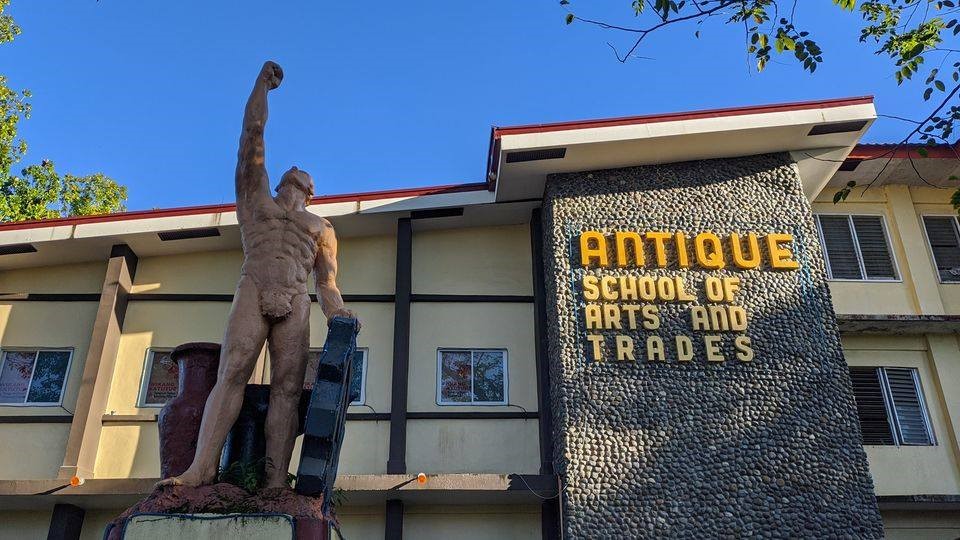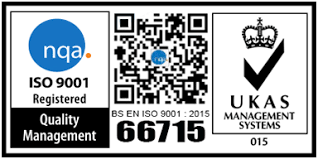UA History
The pursuit of making quality education accessible to Antiqueños fueled the institution’s humble beginning. By virtue of RA 857, Antique School of Arts and Trades (ASAT) was established on January 19, 1954 through the efforts of the late Cong. Tobias A. Fornier.
Upon the approval of the Act, classes were decided to be formally held immediately during the SY 1954-1955. Sibalom Elementary School offered an office room for the use of the school’s administration and personnel.

With the passion and enthusiasm of the pioneers; the cooperation of all sectors in the community; and the benevolence of the late Mayor Santiago A. Lotilla and municipal officials, a site for the school was acquired and the dream of having a school that will provide quality education to Antique’s youth was realized. On the site, a five-room building made of nipa and bamboo was constructed to serve as classrooms for the students.
The first classes were formally opened on July 1, 1954 with 188 Secondary Trade and 53 Trade –Technical Education Students. The first courses offered were Ceramics, Automechanics, Furniture and Cabinet- Making, Building Construction, and Food Trades.
The first few years of ASAT were years of forming its physical component. Buildings, driveways, drainage, playground and other infrastructure were constructed to address the growing needs of the institution. The first semi- permanent building for classroom instruction was the Ceramics Building. This was finished in the second semester of SY 1954-55 and it housed all the classes in related subjects when the nipa structure was wrecked by a typhoon.
Among the courses offered, industrial ceramics, which was the main justification for the establishment of the school was given special attention. Later, the school won awards and was acclaimed as one of the best schools of ceramics in the country.
The administrators and teachers of ASAT were truly instrumental in its development as an institution. As the population of the school grew, the infrastructure improved. More buildings were constructed and more courses were offered to facilitate better learning.
Aside from a secondary trade course and a two-year trade course, the institution started to offer four- year courses namely: Bachelor of Science in Industrial Education in 1968 and Bachelor of Science in Practical Education in 1976. Moreover, ASAT also opened Master of Arts in Food and Nutrition Course in1978 and Master of Arts in teaching Vocational Education (MATVE) in 1979.
Seeing ASAT as a venue for molding Antiqueños’ intellectual and creative skills, former Assemblyman Arturo F. Pacificador authored Parliamentary Bill 912 which converted ASAT to Polytechnic State College of Antique (PSCA). This conversion from a trade school to a state college was officially entered in the school’s timeline on November 14, 1982. Dr. Godofredo E. Gallega, the officer-in-charge during the conversion was then designated as the first president of PSCA.
When Dr.Gallega’s term as president ended, Dr. Benny A. Palma, the president of Aklan State University served as OIC president of the college for six (6) months.
Dr. Victor E. Navarra was then voted upon by the Board of Trustees (BOT) to serve as the president of the college by virtue of BOT resolution No. 6, series of 2006.
The conversion of the school was not only a change in its name but also a change in the standard of education and the services rendered. It proposed more impressive changes in its building, grounds and physical structures, and in its facilities and equipment. Through the efforts of then Principal Teopisto Umpad, the Science Building was constructed with funds from Pres. Carlos P. Garcia. PSCA held significant events inside and outside the campus and participated in more relevant activities in the community.
As the school grew, more courses were offered to answer the need for employment and global competitiveness. These programs include Doctor of Philosophy, Doctor of Public Administration, Master of Education, Master of Public Administration, Master of Science and Master of Arts in Education. In the Higher Education Curriculum, the courses offered are BS Secondary Education, Bachelor in Elementary Education, BS SPED, BS Industrial Education, BS Business Administration, BS Marketing, BS Management Accounting, BS Marine Engineering, BS Marine Transportation, BS Community Development, BS Industrial Technology, BS Computer Science, BS Electronics and Communications Engineering, BS Electrical Engineering, BS Criminology, BS Hotel and Restaurant Management, AB Political Science, AB Psychology, and Seafarers Rating Course.
The 90’s was a decade of expansion for the school. This expansion was not only apparent in PSCA’s growing population, curricular offering and facilities but also in its thrusts and programs. Aside from the main campus in Sibalom, PSCA extended its pursuit for quality education in other areas of the province. The then Tario Lim Ruiz Memorial-Antique School of Fisheries became the PSCA Tibiao Campus and the Antique College of Agriculture became the Hamtic Campus. The expansion era blossomed and satellite campuses in Libertad and Caluya were also established.

The idea of expansion also brought the idea of accreditation. This was the time when the aim for excellence became a challenge for all the constituents of PSCA. The College of Education brought glory to the institution for its exemplary performance in the Licensure Examination for Teachers (LET) and for passing the level II accreditation.
The year 2000 onwards was considered a journey toward universityhood. Through the efforts of Gov. Exequiel E. Javier and the school’s administration and personnel, PSCA was converted to University of Antique (UA) on November 10, 2009 by virtue of RA 9746 signed by former President Gloria Macapagal Arroyo. This conversion created an undeniable impact to all the constituents of the university.
The school’s leaders and personnel really worked hard and did their best to sow the seeds of success and excellence in the institution. The noble pursuit for quality education was gradually and tangibly achieved from one administration to the next. Mr. Fermin Taruc Sr., the first superintendent of ASAT, was succeeded by Mr. Hilarion Agustin, Mr. Gil H. Tenefrancia, Mr. Rogelio Cachuela, Mr. Victor Blacer, Mr. Avelino Asuncion, Dr. Paulino Villagonzalo, Mr. Salvador Navarro, Mr. Olimpio Madlangbayan (OIC), Mr. Adriano S. Sullesta, Dr. Godofredo E. Gallega (first president of PSCA) and Dr. Victor E. Navarra (first president of UA, 2006 present).
As a growing university, UA has tried to improve its curricular offerings, facilities and equipment to address the needs of the students. Apparently, the need to accommodate more students who desire a place for learning paved the way for the provision of additional buildings, more classrooms and modern facilities.
The passage of time has become a witness to the challenges the school has met from its foundation as ASAT; its growth as PSCA; and its maturity as UA. The University of Antique is a living proof of a journey from a humble beginning to a dynamic and illustrious future. With its unrelenting effort to provide quality education and to improve its services to its clientele, University of Antique plays an indispensable role in the progress of the province and undoubtedly remains as Antique’s pride.


